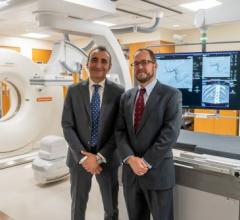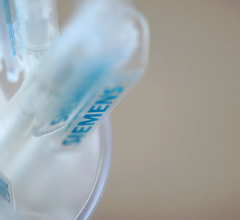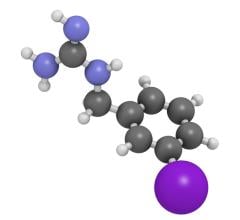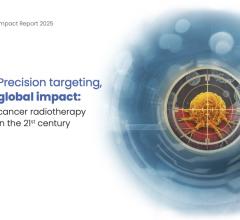
The experimental drug avasopasem manganese protects healthy tissue while enhancing radiation's capacity to kill cancerous tumor cells by converting superoxide to hydrogen peroxide. Image courtesy of Michael Story, Ph.D.
May 21, 2021 — An experimental drug that has shown promise in protecting healthy tissue from collateral damage caused by radiation therapy for cancer also appears to enhance radiation's capacity to kill tumors, a new study led by UT Southwestern scientists shows. The findings, published online in Science Translational Medicine, could provide a much-needed boost to the radiation treatments used against a variety of tumor types.
The drug, avasopasem manganese (AVA), has already shown promise in clinical trials to prevent a side effect known as acute mucositis. This condition commonly occurs in head and neck cancer patients when radiation therapy damages mucous membranes. However, for this drug to become part of clinical care, it should protect healthy cells from radiation but not cancer cells, explains study leader Michael Story, Ph.D., professor of radiation oncology at UTSW and a member of the Harold C. Simmons Comprehensive Cancer Center.
To determine whether AVA was accomplishing this goal, Story and colleagues at UTSW and the University of Iowa treated cancerous cell lines with this compound before exposing them to radiation. The cancerous cells that received the drug were not protected from radiation and, surprisingly, appeared in some cases to respond more to radiation compared with those that did not receive AVA, particularly at high radiation doses.
This phenomenon also occurred in cancerous cell lines that had been implanted in mice and allowed to grow into tumors. The tumors shrank significantly more when animals were treated with AVA just before receiving a single high dose of radiation, similar to a technique referred to as stereotactic ablative radiotherapy (SAbR), which is used for cancer therapy, compared with those that did not receive the drug. When the treated mice received the drug both before radiation and in the days after, in some cases their tumors disappeared completely.
These positive results in animals were found in several different tumor types, including lung, pancreatic, and head and neck. Further experiments showed that AVA appears to exert its enhanced tumor-killing effects by converting superoxide, which are damaging oxygen ions generated by high doses of radiation, to hydrogen peroxide at levels that overwhelm a tumor's ability to tolerate hydrogen peroxide. Furthermore, using an engineered cell line that overexpressed an enzyme that rids tumors of excess hydrogen peroxide, the anti-tumor effect was nearly eliminated.
Story, a member of the Simmons Cancer Center's Experimental Therapeutics Research Program, notes that AVA is currently being tested in phase 1 and phase 2 clinical trials to enhance therapy, including one clinical trial that combined SAbR with AVA that nearly doubled overall survival in pancreatic cancer patients. "With this drug," he says, "the radiation doses we deliver could be profoundly more effective, while at the same time contribute to protecting adjacent normal tissues."
For more information: www.


 December 04, 2025
December 04, 2025 









